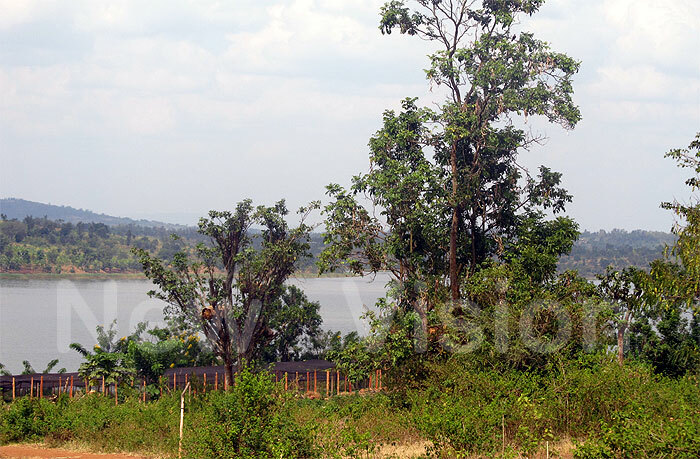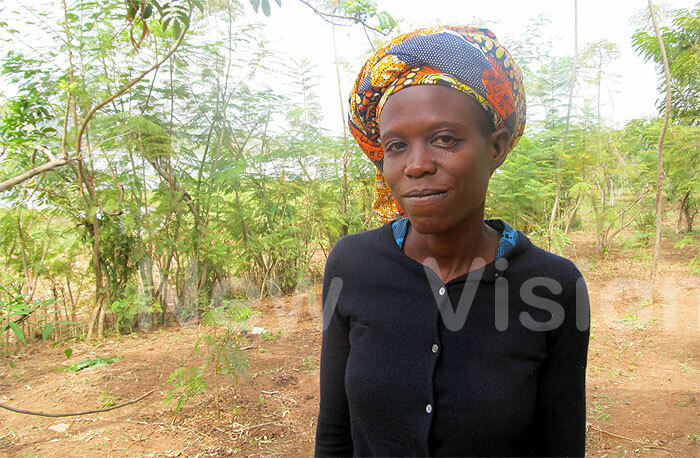Rwanda champions buffer zones for water quality protection
In Rwanda, a buffer strip is maintained up to 50m from the protected water body.
PIC: Children draw water from a section of Lake Cohoha. (Credit: Frederick Mugira)
After nearly three decades of depending on silted water from Lake Cohoha in southern Rwanda, Mukahigiro Davita, one of the residents living in the villages along the banks of this lake, now fetches water free of sand, soil and mud.
Mukahigiro's new ray of hope is as a result of the project — Water, Climate and Development Program (WACDEP) — implemented in the Lake Cohoha basin by Global Water Partnership of Eastern Africa (GWPEA), an international organisation that works to advance governance and management of water resources for sustainable and equitable development.
Lake Cohoha is situated on the Rwanda- Burundi boarder and covers up to 508 km2. Part of this lake equivalent to 139 km2 lies in Rwanda. The remaining 369 km2 is in Burundi.
As part of their activities to promote water security and climate resilience in Bugesera district of Rwanda, GWPEA is implementing initiatives intended to create and manage a vegetated buffer zone around Lake Cohoha.
A buffer zone also known as a buffer strip is piece of land with permanent vegetation preserved around a protected water body. It serves many purposes including removing of water pollutants from surface runoff. This subsequently protects water bodies such as lakes and rivers from pollution.
In Rwanda, a buffer strip is maintained up to 50m from the protected water body.
Under this initiative, started about three years ago, permanent vegetation including trees has been planted in the buffer zone to prevent sediments from reaching Lake Cohoha. Sediments are material such as stones and sands carried to the bottom of a water body.
The trees in the buffer strip are planted by the local people living close to the lake. Mukahigiro Davita is one of such persons.

Some trees in the buffer zone. (Credit: Frederick Mugira)
"The surface water runoff used to carry all sorts of dirt including soil into our lake. In the past, we used to fetch brown water from the lake, but now it is good water," notes the visibly happy Mukahigiro.
Xavier Tetero, the chair Rwanda Water Partnership says the buffer zone initiative is helping to shield the lake from siltation.
"It is working as barrier to sediments that might come from agriculture activities and also any other activities that might be upstream," says Tetero.
He narrates that people living close to Lake Cohoha have not only benefited by getting silt-free water but have also been able to earn a living from this project.
"They were paid for planting these trees. But also when we plant trees in the buffer zone, we make sure that they are suitable for the area and can be used by the communities for other purposes," narrates Tetero.
Other purposes include provision of firewood according to Seraphina Wibabara, the area sector agronomist.
"People living in communities around this lake collect tree droppings and use them to cook their food and other domestic proposes," notes Wibabara.

Mukahigiro Davita, a resident of one of the villages along the banks of Lake Cohoha. (Credit: Frederick Mugira)
Pollution of rivers, lakes, and groundwater resources as a result of contaminant load from municipal, industrial and agricultural sources is common thought-out Africa. This is leading to negative effects on the natural ecosystems including killing of life that depends on these water bodies such as fish.
But the Global Water Partnership of Eastern Africa (GWPEA) says this could soon become history in some countries on the continent including Uganda.
Gerald Kairu, the Regional Project Manager for Integrated Drought Management Program in the Horn of Africa at Global Water Partnership, Eastern Africa says their project for creation and management of vegetated buffer zones around protected water bodies has been a success in Rwanda where it is being piloted.
He says this project will soon be extended to other countries on the continent to reduce contamination of water bodies.
"This water and climate program was piloted in Rwanda and Burundi but the intention is to also expand it to other countries like Uganda and Kenya as well," notes Kairu.
The Sustainable Development Goal number six requires countries to "ensure availability and sustainable management of water and sanitation for all" by 2030.
But according to the 2030 Water Resources Group, "If countries maintain a business-as-usual approach to managing water, we can expect a 40 percept gap between fresh water supply and demand by 2030."